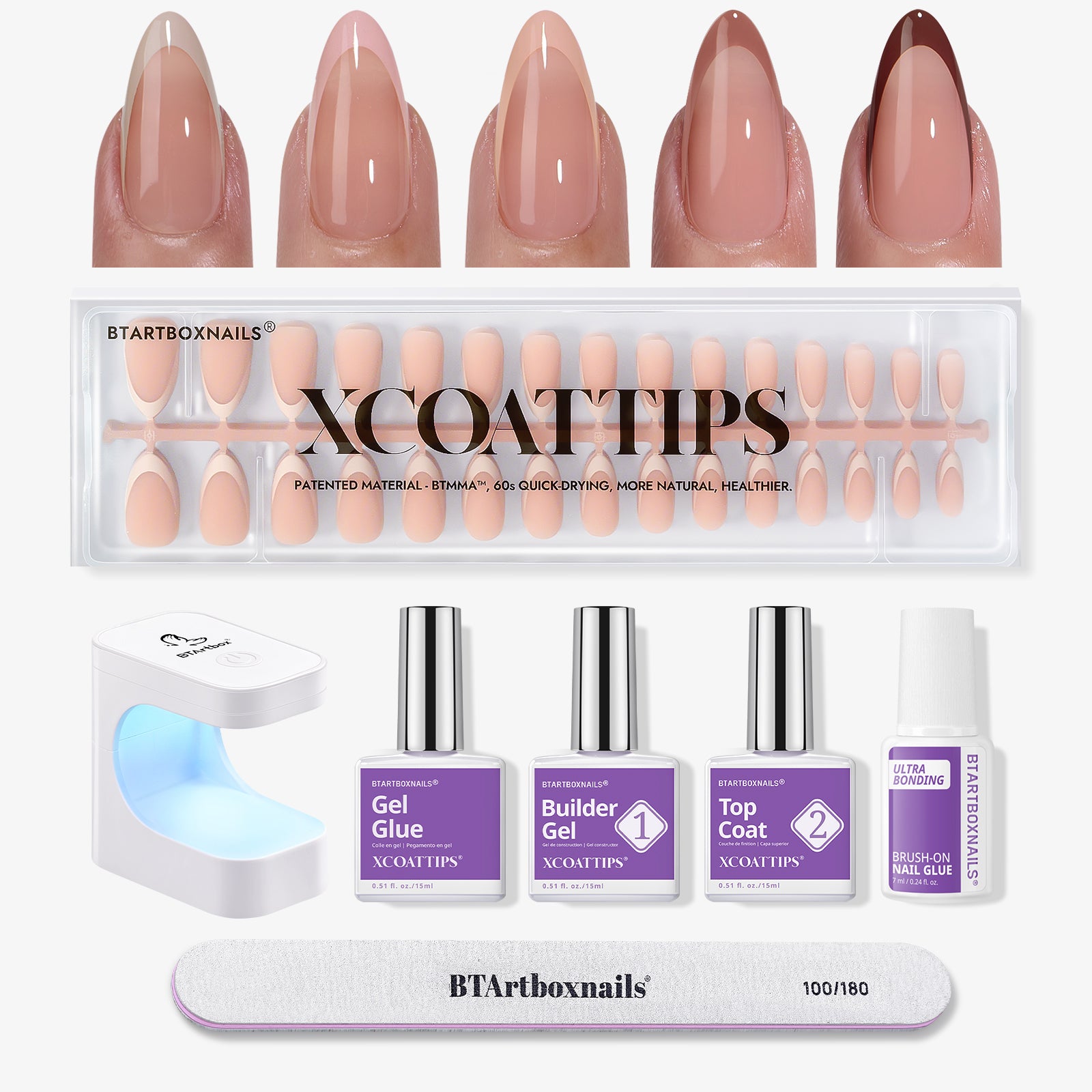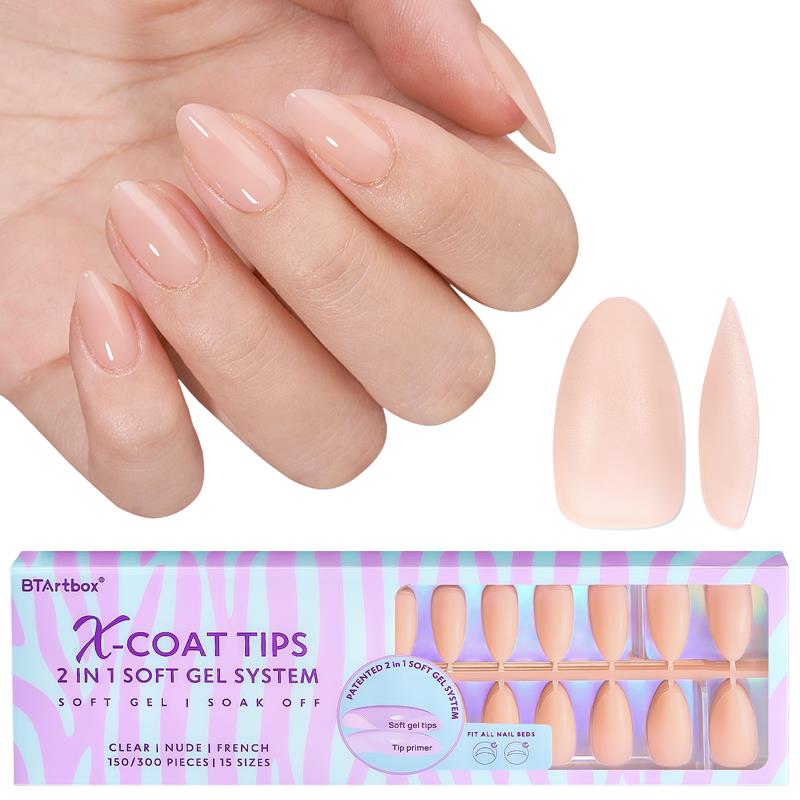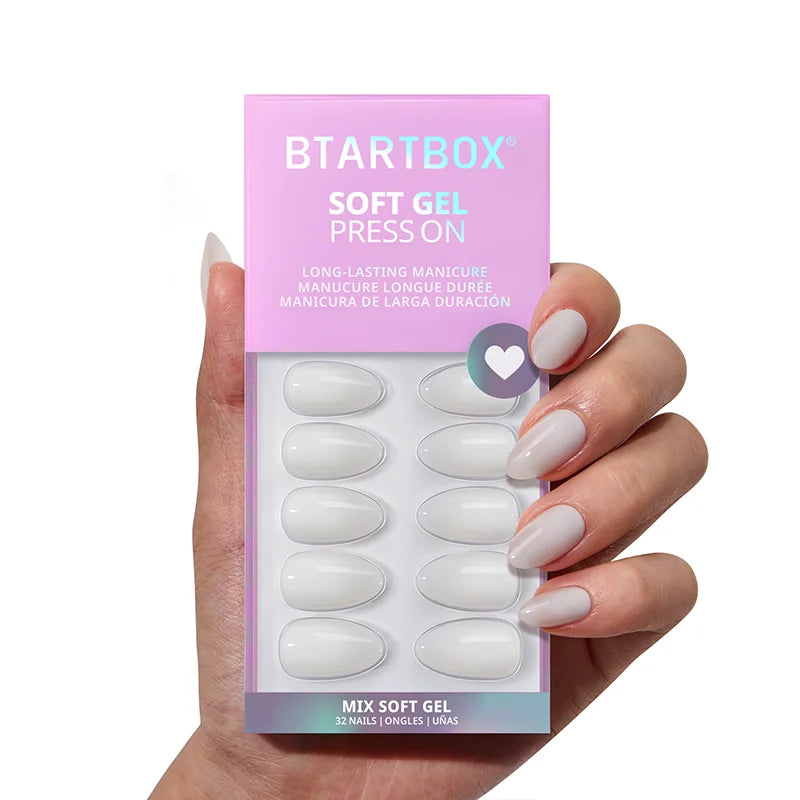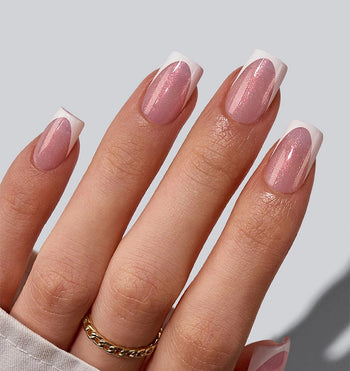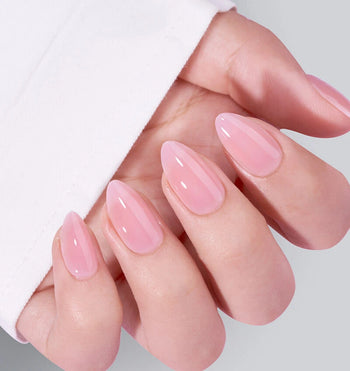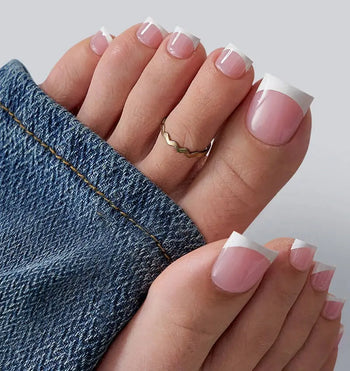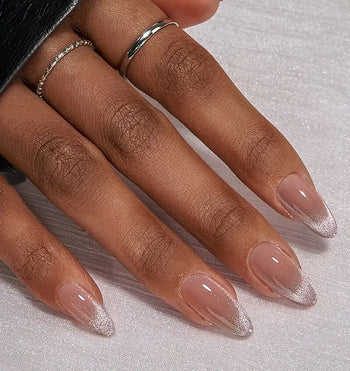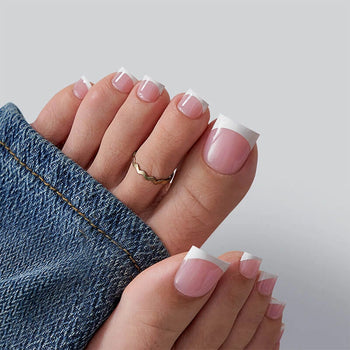When it comes to nail enhancements, choosing between hard gel vs builder gel is important. With many options available, it can be tough to decide. In this guide, we'll compare hard gel and builder gel to help you choose.
Hard gel and builder gel are both used to create beautiful, long-lasting nails. However, they have key differences that make them better for different purposes. By understanding each type, you can choose the one that fits your needs.
So, what exactly is the difference between hard gel and builder gel? Hard gel is thicker and more durable, ideal for adding length. Builder gel is softer and more flexible, perfect for a natural-looking overlay. In the following sections, we'll look closer at each type so you can decide which one is right for you.
What Is a Hard Gel?
If you're looking for a sturdy and long-lasting nail enhancement, hard gel might be the perfect option for you. Hard gel is a type of nail extension that is made of a thick, non-porous gel. It is applied to the natural nail with a brush and then cured under a UV or LED light.
Hard gel is known for its durability and strength. Once applied, it can last for several weeks without chipping or breaking. Unlike other types of nail enhancements, hard gel cannot be soaked off using acetone. Instead, it needs to be filed off by a professional nail technician.
Benefits of Hard Gel
One of the benefits of hard gel is that it can be used to create a variety of nail shapes and lengths. It is also ideal for people with weak or brittle nails, as it provides an extra layer of protection. Hard gel can also be used to fix broken or damaged nails, as it can be sculpted to match the shape of your natural nail.
Important Tips 💡:
Overall, hard gel is a great option for anyone looking for a long-lasting and durable nail enhancement. With its thick and non-porous properties, it provides a strong and protective layer to your natural nails.
What is Builder Gel?

If you're looking for an alternative to acrylics and hard gel, builder gel might be the answer. Builder gel is a type of gel that is used to strengthen natural nails or to create nail extensions. It comes in a bottle with a brush applicator or in a pot, in which case you'd apply it with a nail brush like what you'd use for acrylics.
Builder gel is thick and has a consistency similar to honey. It's made up of a mixture of oligomers, monomers, and photoinitiators. These ingredients work together to create a gel that can be cured under a UV or LED lamp. Once cured, builder gel is strong and durable, providing a solid foundation for your nails.
Benefits of Builder Gel
One of the unique benefits of builder gel is that it can be used to create a range of nail shapes and lengths. Whether you want short, square nails or long, almond-shaped nails, builder gel can help you achieve the look you want. It's also versatile enough to be used on natural nails or to create extensions.
Another benefit of builder gel is that it can be used to fix broken or damaged nails. If you have a nail that's cracked or split, you can use builder gel to reinforce the nail and prevent further damage. This can help you avoid having to cut your nails short or deal with painful hangnails.
Important Tips 💡:
Overall, builder gel is a great option for anyone looking for a strong, durable, and versatile nail product. Whether you're a professional nail technician or just someone who loves doing their own nails at home, builder gel can help you achieve the look you want and keep your nails healthy and strong.
Application Process: Hard Gel vs. Builder Gel

When it comes to applying hard gel and builder gel, there are some differences in the application process. Here's a step-by-step guide to help you understand the differences between the two:
Hard Gel Application
- Start by prepping your nails. Clean them thoroughly and push back your cuticles.
- Apply a base coat to your nails and cure it under a UV lamp.
- Apply a thin layer of hard gel to your nails, making sure to cover the entire nail. Cure it under a UV lamp.
- Repeat step 3 until you achieve the desired thickness and shape. Make sure to cure each layer of hard gel under a UV lamp.
- Once you've achieved the desired thickness and shape, file and buff your nails to smooth out any rough edges.
- Apply a top coat to your nails and cure it under a UV lamp.
How to Apply Builder Gel
- Start by prepping your nails. Clean them thoroughly and push back your cuticles.
- Apply a base coat to your nails and cure it under a UV lamp.
- Apply a layer of builder gel to your nails, making sure to cover the entire nail. Use a brush to shape the gel into the desired shape. Cure it under a UV lamp.
- Repeat step 3 until you achieve the desired thickness and shape. Make sure to cure each layer of builder gel under a UV lamp.
- Once you've achieved the desired thickness and shape, file and buff your nails to smooth out any rough edges.
- Apply a top coat to your nails and cure it under a UV lamp.
The main difference between the two application processes is that hard gel is applied in multiple layers, while builder gel is applied in a single layer. Additionally, builder gel is easier to control during application, making it a good option for beginners.
Both hard gel and builder gel require a UV lamp to cure, but hard gel cannot be soaked off using acetone, while builder gel can be removed by soaking.
Durability and Strength: Hard Gel vs. Builder Gel
When it comes to nail enhancements, durability and strength are two important factors to consider. Hard gel and builder gel are two popular options that offer different levels of durability and strength.
The hard gel provides a durable and strong finish to the natural nail, making it less prone to breakage or chipping. Its thicker consistency makes it ideal for lengthening natural nails. Hard gel also provides a glossy finish that can be further enhanced with glittery.
Builder gel, on the other hand, is softer and easier to shape, making it a great option for those who prefer a more natural-looking nail enhancement. While it may not provide the same level of strength as hard gel, it still offers a decent level of durability.
Which one is more suitable for you depends on your nail type and lifestyle. If you have weak or brittle nails, hard gel may be a better option as it provides more strength and protection.
If you prefer a more natural-looking enhancement and have an active lifestyle that involves a lot of manual work, builder gel may be a better option as it is less likely to break or chip.
Flexibility and Versatility: Hard Gel vs. Builder Gel
When it comes to creating various nail shapes and designs, both hard gel and builder gel offer different levels of flexibility and versatility.
Hard gel is known for its durability and strength. It provides a sturdy base for nail extensions and is ideal for those who want to add length to their natural nails. However, hard gel is less flexible than builder gel, which can make it difficult to create certain nail shapes and designs.
On the other hand, builder gel is more flexible and versatile than hard gel. It can be used to create a variety of nail shapes and designs, including curved and angled shapes. Builder gel is also easier to mold and shape than hard gel, making it a popular choice among nail technicians.
Important Tips 💡:
The choice between hard gel and builder gel depends on your specific needs and preferences. If you want a strong and durable base for your nail extensions, hard gel is the way to go. However, if you want greater flexibility and versatility in creating nail shapes and designs, builder gel is the better option.
Hard Gel vs. Builder Gel: Removal Process
When it comes to removing hard gel and builder gel, the process is slightly different for each type of gel. Hard gel cannot be soaked off using acetone, and instead, it has to be filed off because acetone cannot penetrate it. Builder gel, on the other hand, is much softer and can be removed by soaking your nails in acetone for 10-15 minutes.
How to Remove Hard Gel?
To remove the hard gel, first, you need to use a coarse grit nail file to remove the top layer of the gel. Then, you can use an electric file or a hand file to file down the remaining gel until it is completely removed. Be sure to file gently and avoid filing too close to your natural nail to minimize damage.
How to Remove Builder Gel?
To remove builder gel, you will need to soak your nails in acetone for 10-15 minutes. You can do this by soaking a cotton ball in acetone and placing it on top of your nail. Wrap your nail with tin foil to keep the cotton ball in place and allow the acetone to penetrate the gel. After 10-15 minutes, remove the foil and cotton ball and gently push the builder gel off with an orange stick.
Important Tips 💡:
It's important to note that both hard gel and builder gel can damage your natural nails if not removed properly. To minimize damage, you should avoid picking or peeling the gel off and instead use the proper removal techniques. Additionally, you should always moisturize your nails and cuticles after removing the gel to keep them healthy and hydrated.
Price Comparison
When it comes to choosing between hard gel and builder gel, cost is an important factor to consider. Here's a breakdown of the costs associated with using each type of gel.
1. Initial Application
The cost of the initial application of hard gel and builder gel is similar. Both require a base coat, the gel itself, and a top coat. However, hard gel tends to be slightly more expensive than builder gel due to its thicker consistency.
2. Maintenance
Maintenance costs for hard gel and builder gel are also similar. Both require regular fills to maintain the look of your nails. However, hard gel may require more frequent fills due to its thicker consistency, which can cause more lifting and chipping.
3. Removal
The cost of removal is where hard gel and builder gel differ the most. Hard gel cannot be soaked off with acetone and must be filed off, which can be time-consuming and may require a visit to a professional nail salon. This can make the cost of removal significantly higher for hard gel. On the other hand, builder gel can be easily soaked off with acetone, making removal much more affordable and convenient.
Hard Gel and Builder Gel Pros and Cons
When choosing between hard gel and builder gel, it's important to consider the pros and cons of each option. Here is a side-by-side comparison to help you make an informed decision:
|
Pros of Hard Gel
|
Cons of Hard Gel |
Advantages of Builder Gel |
Disadvantages of Builder Gel |
|
Provides durable strength |
Cannot be soaked off with acetone |
Can be removed by soaking |
May not be as durable as hard gel |
|
Glossy finish |
Must be filed off |
Can be used to build and sculpt nail extensions |
May require more skill to apply |
|
Ideal for lengthening natural nails |
Thicker and stickier consistency |
Can protect natural nails |
May take longer to cure |
Hard gel is a great option if you are looking for a long-lasting and strong finish. It provides durable strength to your natural nails and has a glossy finish that can enhance your nails' appearance. However, hard gel cannot be soaked off with acetone and must be filed off instead. Additionally, its thicker and stickier consistency may make it more difficult to apply.
On the other hand, builder gel can be removed by soaking and can be used to build and sculpt nail extensions. It can also protect your natural nails from damage. However, it may not be as durable as hard gel and may require more skill to apply. It may also take longer to cure.
Conclusion
In conclusion, both hard gel and builder gel have their advantages and disadvantages. The hard gel provides durable strength to the natural nail with minimal risk of breakage or chipping. It also has a glossy finish that can be further enhanced with glittery. However, it cannot be soaked off using acetone and has to be filed off because acetone can't penetrate it.
On the other hand, builder gel can either be soft gel semi-hard gel, or hard gel. It applies like a soft gel straight from the bottle, yet it wears like acrylics and hard gel to build and sculpt nail extensions. Builder gel is ideal for creating a variety of nail art designs and can be removed by soaking.
When choosing between hard gel and builder gel, it's important to consider individual needs and preferences. If you want a long-lasting, durable manicure, hard gel is the way to go. But if you prefer a softer, more flexible finish, builder gel is the better choice.
For top-quality builder gel products, check out BTArtboxnails Viral Nails. They offer a wide range of viral nails and an extensive selection of press-on nails, ensuring you find the perfect style for any occasion. Whether you're looking for durability or a natural look, BTArtboxnails has you covered with its premium options. Explore their collection today and elevate your nail game to the next level.
Related Posts:
- Is Nail Glue the Same as Super Glue? Nail Expert Explained
- Oval vs Almond Nails: Which Shape is Best for You?
Frequently Asked Questions
Is builder gel the same thing as hard gel?
No, builder gel and hard gel are not the same thing. Hard gel is a nonporous gel that has to be filed off, whereas builder gel is a soft gel that can be removed by soaking. Builder gel is an alternative to acrylics and hard gel to build and sculpt nail extensions using soft gel.
Is builder gel better than gel?
Builder gel is generally considered to be more durable than regular gel. This is because builder gel is thicker and stronger, creating a strong foundation for your nails. However, the choice between builder gel and regular gel depends on personal preference and the desired outcome.
Is hard gel damaging to nails?
When applied and removed correctly by a professional, hard gel is not damaging to nails. However, improper application or removal can cause damage to the natural nail. It is important to choose a reputable nail technician and follow proper aftercare instructions to ensure the health of your nails.
Is hard gel better than soft gel?
Hard gel is much thicker and stickier than soft gel, making it ideal for lengthening natural nails. Soft gel is more flexible and often used for overlaying the natural nail or creating a more natural look. The choice between hard gel and soft gel depends on personal preference and the desired outcome.
How long does builder gel last?
Builder gel can last up to three weeks with proper care and maintenance. However, the longevity of the gel depends on factors such as the quality of the product, the application technique, and the natural growth rate of your nails. It is recommended to have builder gel removed and reapplied every two to three weeks to maintain the health of your nails.




